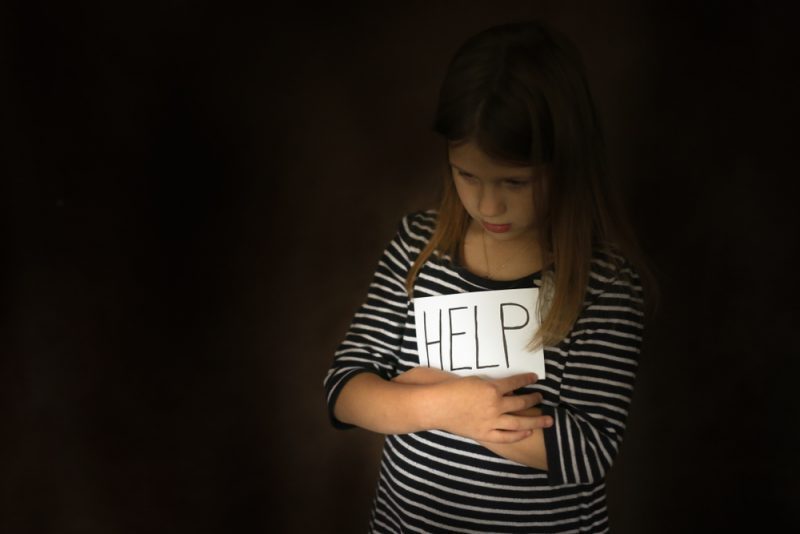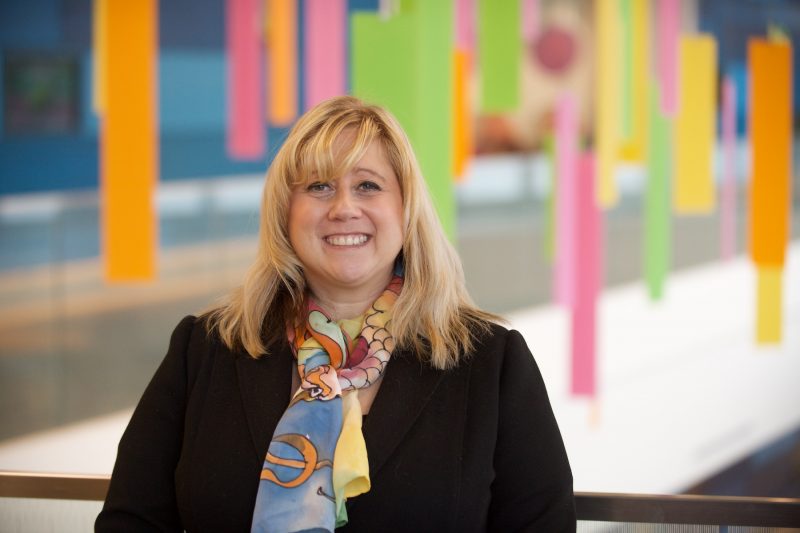 In recognition of National Child Abuse Prevention Month in April, the Akron Children’s Children at Risk Evaluation (CARE) Center hosted a child sexual abuse prevention event. Dr. Emma Raizman, who is board-certified in both general and child abuse pediatrics, presented “Sexual Abuse: Could It Happen in My Family?”
In recognition of National Child Abuse Prevention Month in April, the Akron Children’s Children at Risk Evaluation (CARE) Center hosted a child sexual abuse prevention event. Dr. Emma Raizman, who is board-certified in both general and child abuse pediatrics, presented “Sexual Abuse: Could It Happen in My Family?”
Dr. Raizman opened her presentation by defining what child sexual abuse is. “It’s any content that is harmful to a child’s mental, emotional or physical health,” she explained. “Sexual abuse ranges from touching and fondling to pornography and sex trafficking to penetration and assault.”
It’s hard to determine the exact number of kids who are sexually abused because so many instances go unreported. “The estimates are that 1 in 4 girls and 1 in 8 boys will be the victims of sexual abuse, 20% before age 8,” Dr. Raizman said. “Think about those statistics relative to a first-grade classroom: at least 3-8 of those children will be sexually abused – possibly more.”
While teaching children about “stranger danger” is common, Dr. Raizman emphasized that 60% of sexual offenders are people your child knows – and another 30% are relatives. “In 90% of cases, the child knows their abuser,” she said. “The perpetrators are overwhelmingly male, and most don’t have just one victim. About 70% have 1-9 victims, and 20% have 10-40 victims.”

Dr. Emma Raizman is board-certified in both general and child abuse pediatrics.
Sexual offenders are master manipulators – of kids and their parents – taking weeks, months or even years to groom their victims. “They identify and target their victims: that could be the child who is insecure, the one who’s being bullied at school or the one who is craving attention,” Dr. Raizman said. “Maybe it’s a busy single mom, and the perpetrator steps in to help. The mom thinks he’s a knight in shining armor by bringing her child home from soccer practice, but that couldn’t be further from the truth.”
The next step in grooming is to gain trust: offering gifts, time, attention, access to something the child wants. The offender will isolate the child, psychologically and/or physically, and then create secrecy around the relationship. “The abuser will tell the child they have a special connection others won’t understand,” Dr. Raizman said. “He will say that telling anyone about the relationship may hurt someone they love or cause the relationship to stop. Sometimes the abuser threatens to harm a relative or pet.”
Physical contact may start out seemingly innocent with hugs and pats on the knee. The hugs last longer and longer, the hand on the knee lingers. Gradually, the offender will introduce more sexual touching and more invasive contact – and ensure silence by making the child feel scared or guilty.
Many children show no outward signs, emotional or physical, of sexual abuse. Others may exhibit behavioral problems – such as acting out or declining performance at school – or have nightmares. Victims may have anxiety and depression or other problems like headaches and stomachaches. Physical findings may include bleeding, sexually transmitted infections and discharge from the genital area.
When it comes to prevention, laying the foundation starts at a young age. “Use correct terms for body parts,” Dr. Raizman explained. “You call a toe a toe, and an ear is an ear. Don’t use ‘cute’ names for a vagina or penis. Genitals should be called by their actual names.”
Teach your child that certain body parts are private, and explain rules of appropriate touching. Let your kids know are the boss of their bodies and it’s OK to say no, even to an adult. “Don’t force your kids to hug or kiss anyone,” Dr. Raizman said. “A verbal hello is fine – or a quick touch like a fist bump. Let them know it’s OK to tell you if they feel uncomfortable around a relative or family friend.”
Dr. Raizman reminds parents of young kids that curiosity is a normal part of development. “Kids ‘play doctor’ and may show their private parts to their peers. They may touch themselves in public or private,” she said. “What’s not normal is when children demonstrate sexual behavior beyond their developmental state: imitating sexual acts or exhibiting behavior that includes force or coercion.”
For parents of tweens and teens, it’s important to find a balance between giving kids some freedom and protecting them. “Today’s technology makes kids vulnerable, whether it’s a video game chat room or seeing/sharing sexually suggestive images,” Dr. Raizman said. “Talk to your kids about apps and social media; use parental controls. Have a pact that your child can call you anytime they get in over their heads – and you won’t bombard them with questions or rush to judgement. Have a ‘safe word’ kids can use when they call you to let you know they’re in an unsafe situation and need picked up right away.”
If you suspect your young child has been sexually abused, keep your emotions in check and ask open-ended questions. “Ask what body parts are private and if anyone has ever hurt or touched those parts,” Dr. Raizman said. “Ask them to share what happened, thank them for telling and reassure them they are safe.”
If your child approaches you about abuse, take the situation seriously. Listen carefully, be calm and believe your child. If the abuser is in the household, call an advocacy center such as your county Children’s Services office or the Akron Children’s CARE Center. If the abuser doesn’t live in the house, call your local police department.
Dr. Raizman encourages parents to use the variety of educational resources available. “There are books to help parents start age-appropriate talks about sex, and your child’s pediatrician is also a great resource,” she shared. “It’s important to keep the lines of communication open with your children, so they know they can always come to you with questions and concerns.”
More information is available in this 3-part series with Cory Jewell Jensen. Last year, she shared insights garnered from spending 35 years evaluating and treating adult sex offenders and their families in Portland, Oregon.
- Part 1: Protecting children from sexual offenders
- Part 2: How offenders get away with it; Sex offender warning signs; Does treatment for sex offenders work? Advice from child molesters: what does & doesn’t work










